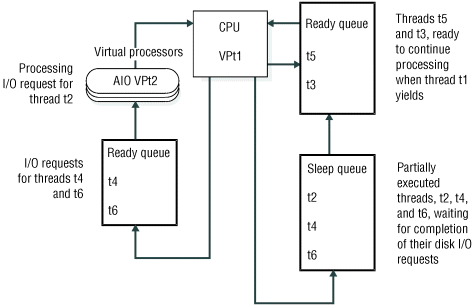Sleep queues
Sleep queues hold the contexts of threads that have no work to do at a particular time. A thread is put to sleep either for a specified period of time or forever.
The administration class (ADM) of virtual processors runs the system timer and special utility threads. Virtual processors in this class are created and run automatically. No configuration parameters affect this class of virtual processors.
The ADM virtual processor wakes up threads that have slept for the specified time. A thread that runs in the ADM virtual processor checks on sleeping threads at one-second intervals. If a sleeping thread has slept for its specified time, the ADM virtual processor moves it into the appropriate ready queue. A thread that is sleeping for a specified time can also be explicitly awakened by another thread.
